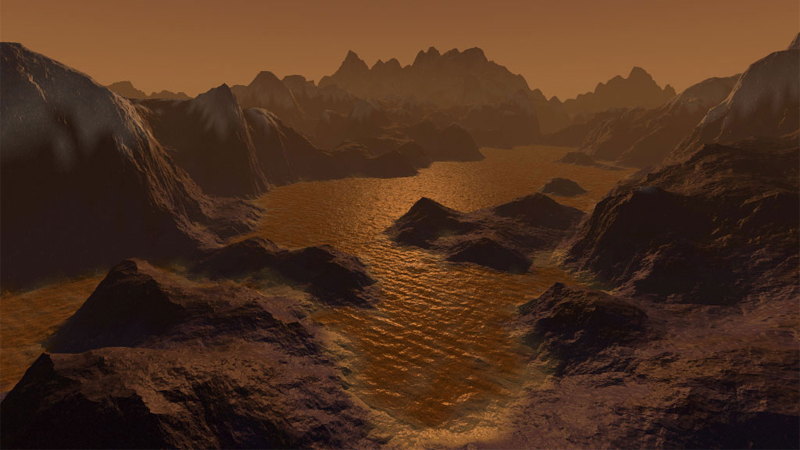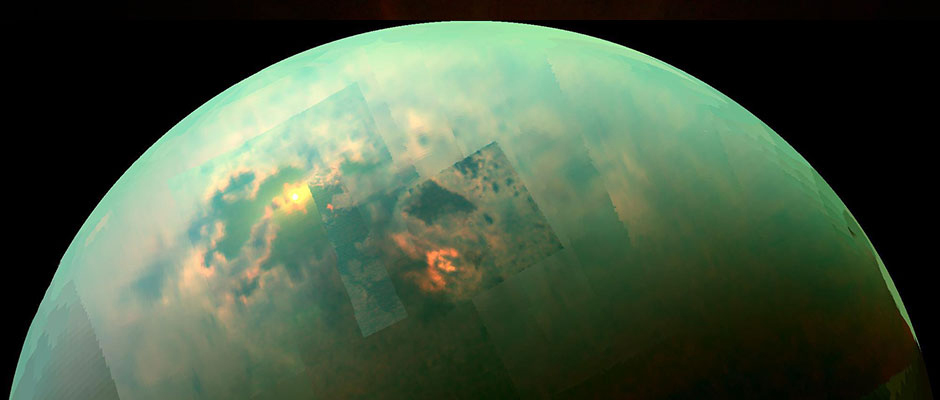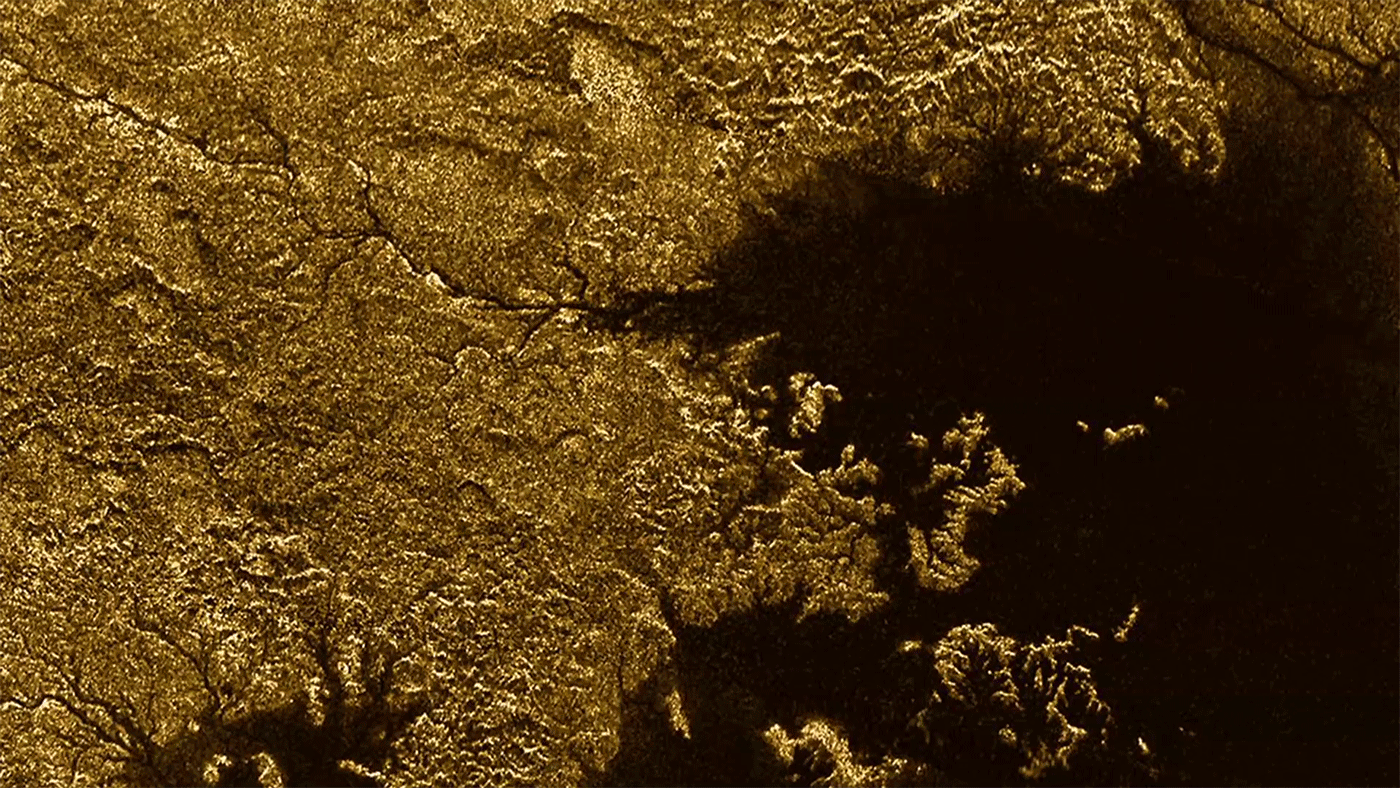Still orbiting Saturn after twelve years, Cassini continues to surprise and delight us with its discoveries. Findings by the NASA spacecraft suggest that Saturn’s moon Titan contains deep, liquid-flooded canyons that may resemble fjords and alpine lakes on Earth. Titan is arguably one of the most interesting moons in the solar system, the only one with a thick atmosphere, in fact made of nitrogen and thicker than Earth’s!
In May 2013, Cassini made a close flyby of Titan, focusing its attention on Vid Flumina, a Nile-like river valley, connected to the sea Ligeia Mare. Apparent drainage networks have been seen in many areas on Titan, mostly in connection with a lake or sea. However, Vid Flumina is a system of narrow, deep and steep-walled canyons. Some sections are 1,870 feet deep with walls sloped at 40 degrees — even steeper than San Francisco’s famous Lombard Street.
Cassini’s radar took the measurements, although normally it creates images of Titan’s surface, pinging the moon with radio pulses and composing pictures based on the signal strength bouncing off the topography. Areas with varying amounts of slope and degrees of smoothness appear different in the radar data.

The radar imaging technique has given us wonderful birds-eye views of Titan’s landscape hidden from Cassini’s visible-light cameras under a thick shroud of hydrocarbon haze. For years we have enjoyed scenes of high and rugged mountainous terrain, vast plains of dunes, dendritic networks of river-like channel systems and the wide, flat, incredibly smooth surfaces of numerous lakes and seas of liquid hydrocarbons.
However, during the May 2013 flyby, Cassini’s radar worked as an altimeter, measuring the elevations of terrain in and around the Vid Flumina complex. This “echolocation” method not only revealed the steepness of the canyon walls and the depth of the channels, but in a number of spots it also revealed “flashes” or glints of sharply reflected radar as if the radio waves were reflecting from a very smooth, very flat and level surface — like a body of liquid.

